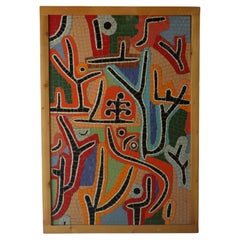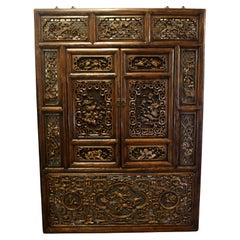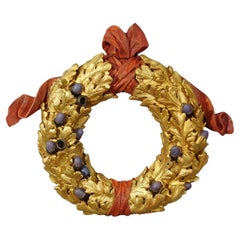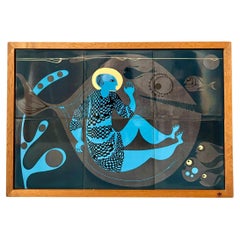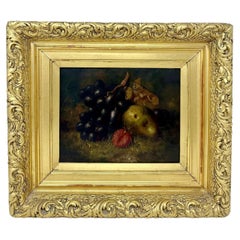Wood Decorative Art
1990s Balinese Wood Decorative Art
Wood
Early 20th Century Bauhaus Wood Decorative Art
Ceramic, Maple
19th Century Chinese Antique Wood Decorative Art
Elm
1930s German Country Vintage Wood Decorative Art
Wood
Mid-20th Century Danish Mid-Century Modern Wood Decorative Art
Ceramic, Pottery, Wood, Oak
Early 19th Century English Victorian Antique Wood Decorative Art
Canvas, Giltwood
20th Century French Wood Decorative Art
Silk, Giltwood
1970s Austrian Mid-Century Modern Vintage Wood Decorative Art
Brass
Late 18th Century French Louis XVI Antique Wood Decorative Art
Giltwood
1980s French Art Deco Vintage Wood Decorative Art
Silk, Acrylic, Wood, Lacquer
1970s American Mid-Century Modern Vintage Wood Decorative Art
Jute, Wood
1940s Chinese Chinoiserie Vintage Wood Decorative Art
Wood
2010s Italian Other Wood Decorative Art
Wood
19th Century French French Provincial Antique Wood Decorative Art
Pine
Early 20th Century French Napoleon III Wood Decorative Art
Wood, Paper
19th Century Dutch Gothic Revival Antique Wood Decorative Art
Linen, Silk, Velvet, Oak
1850s British Antique Wood Decorative Art
Wood
Early 1900s Antique Wood Decorative Art
Glass, Wood, Paper
20th Century American Samoan Wood Decorative Art
Wood, Paint
Late 19th Century Italian Baroque Antique Wood Decorative Art
Canvas, Giltwood
1980s American Other Vintage Wood Decorative Art
Canvas, Giltwood
Late 19th Century Chinese Chinese Export Antique Wood Decorative Art
Wood
Early 20th Century Swiss Wood Decorative Art
Copper, Steel
1840s English Folk Art Antique Wood Decorative Art
Oak, Paper
Mid-20th Century Danish Mid-Century Modern Wood Decorative Art
Ceramic, Pottery, Wood, Oak
20th Century Unknown Wood Decorative Art
Wood, Paper
19th Century Italian Antique Wood Decorative Art
Plaster, Wood
Early 20th Century Japanese Meiji Wood Decorative Art
Pine
Early 1900s Danish Neoclassical Revival Antique Wood Decorative Art
Mirror, Giltwood
Early 20th Century German Art Nouveau Wood Decorative Art
Bronze
1910s Italian Baroque Vintage Wood Decorative Art
Canvas, Giltwood
Late 17th Century Dutch Dutch Colonial Antique Wood Decorative Art
Wood, Earthenware
2010s Italian Other Wood Decorative Art
Wood
Late 19th Century German Rococo Revival Antique Wood Decorative Art
Canvas, Wood
Early 1900s Italian Baroque Antique Wood Decorative Art
Canvas, Giltwood
1880s German Rustic Antique Wood Decorative Art
Antler, Wood
Mid-18th Century Spanish Antique Wood Decorative Art
Wood
1980s American American Classical Vintage Wood Decorative Art
Glass, Wood, Paint, Paper
1980s American Post-Modern Vintage Wood Decorative Art
Canvas, Wood
Early 19th Century Early Victorian Antique Wood Decorative Art
Glass, Oak
2010s Italian Other Wood Decorative Art
Wood
19th Century German Neoclassical Revival Antique Wood Decorative Art
Giltwood, Canvas
Early 1900s Italian Baroque Antique Wood Decorative Art
Canvas, Giltwood
Mid-20th Century American Mid-Century Modern Wood Decorative Art
Wood, Paint
1970s Canadian Mid-Century Modern Vintage Wood Decorative Art
Brass
Mid-20th Century Japanese Showa Wood Decorative Art
Cedar
20th Century Japanese Hollywood Regency Wood Decorative Art
Wood
19th Century French Rococo Revival Antique Wood Decorative Art
Canvas, Giltwood
1880s German Mid-Century Modern Antique Wood Decorative Art
Wood, Paper
Mid-17th Century English Tudor Antique Wood Decorative Art
Wood, Oak
1960s American Neoclassical Vintage Wood Decorative Art
Wood
Late 19th Century Russian Baroque Antique Wood Decorative Art
Gesso, Canvas, Giltwood, Paint
21st Century and Contemporary Italian Modern Wood Decorative Art
Scagliola, Wood
1960s American Mid-Century Modern Vintage Wood Decorative Art
Bronze, Enamel, Pewter
Early 20th Century English Victorian Wood Decorative Art
Giltwood, Paint
17th Century French Baroque Antique Wood Decorative Art
Canvas, Giltwood
21st Century and Contemporary Vietnamese Anglo-Japanese Wood Decorative Art
Wood, Giltwood
1950s European Mid-Century Modern Vintage Wood Decorative Art
Wood
Late 19th Century German Baroque Antique Wood Decorative Art
Gesso, Canvas, Wood
20th Century Wood Decorative Art
Plywood
Read More
At Colonial Williamsburg, Everything Old Is New Again
With the help of a new director, the Virginia institution's folk art and decorative arts museums are undergoing extensive upgrades.
New York’s Hirschl & Adler Showcases the American Workmanship and Design Panache of Neoclassical Treasures
The gallery's latest exhibition proves that museum-quality pieces entice and inspire, whether in traditional or more modern interiors.

